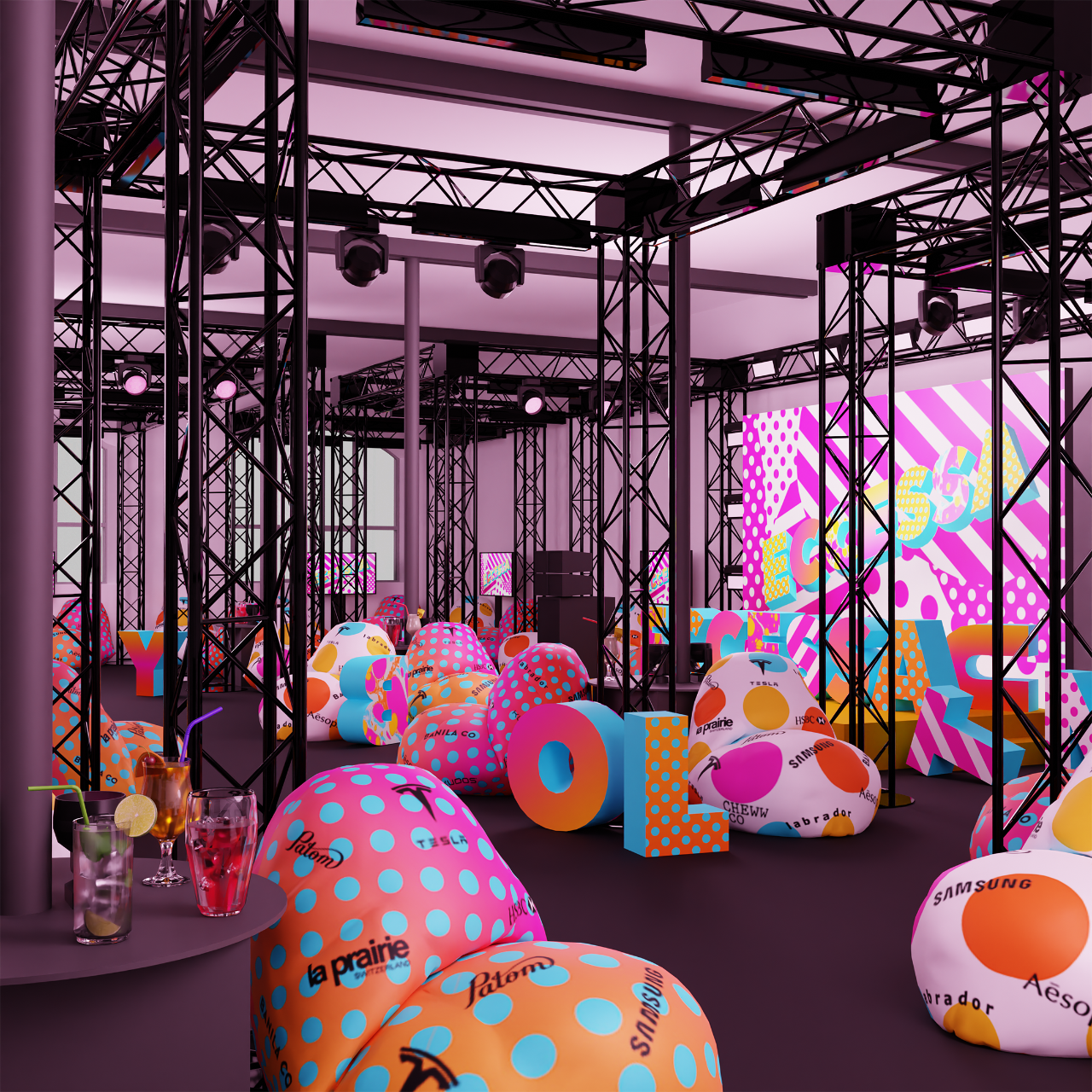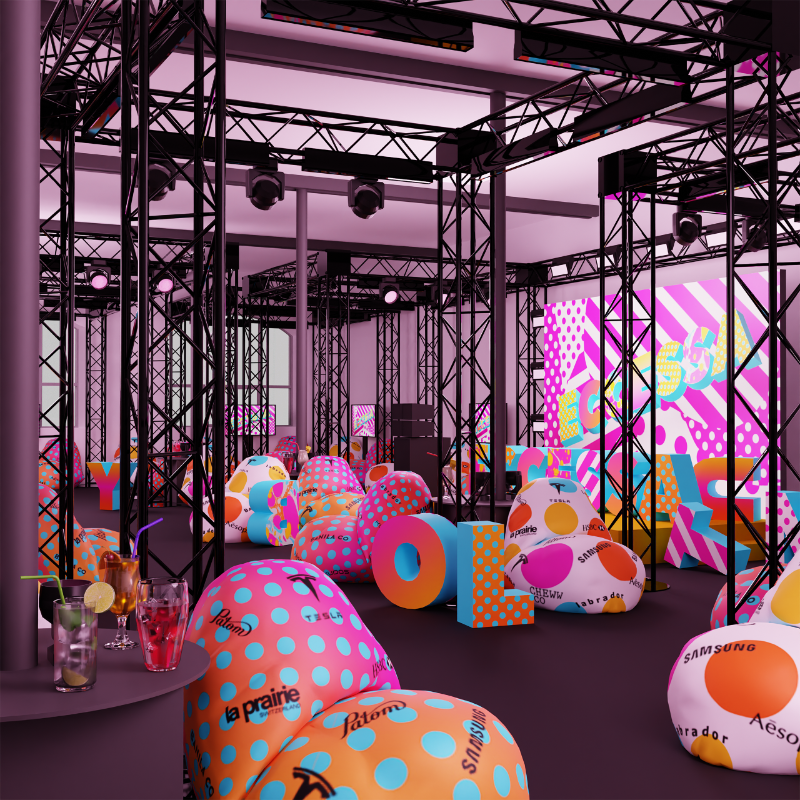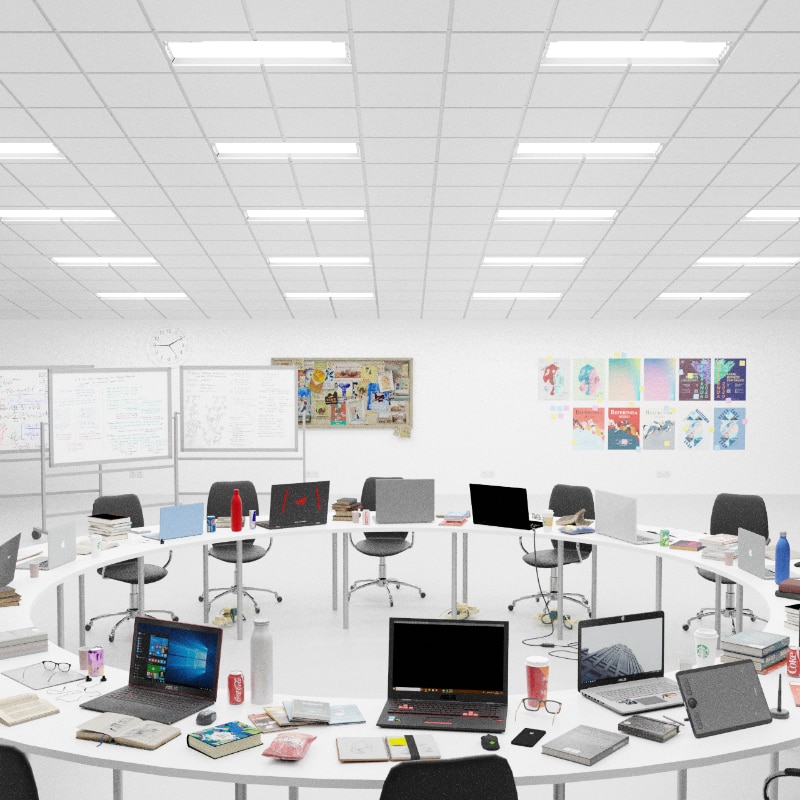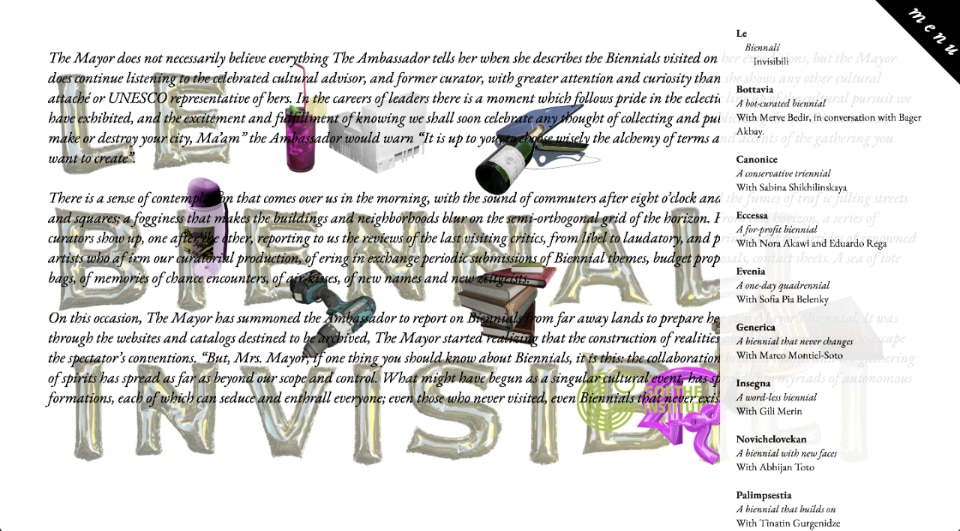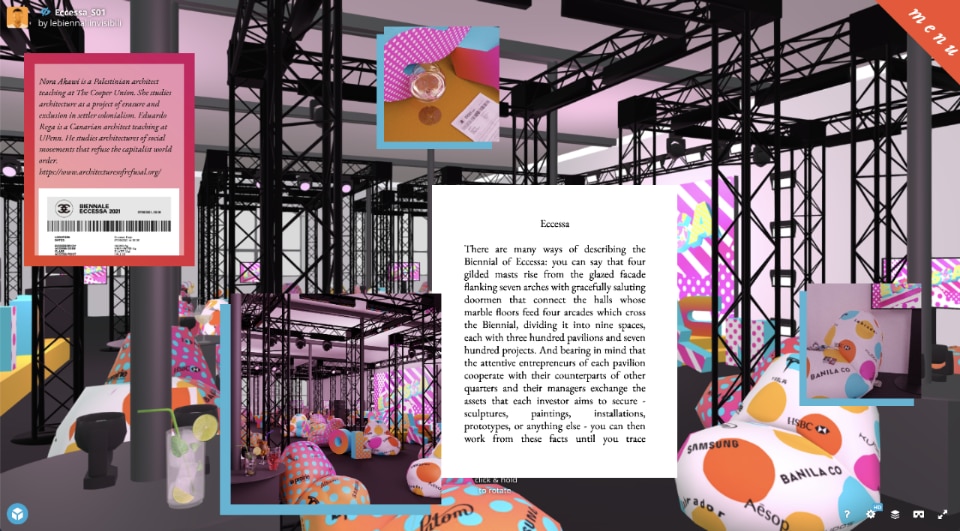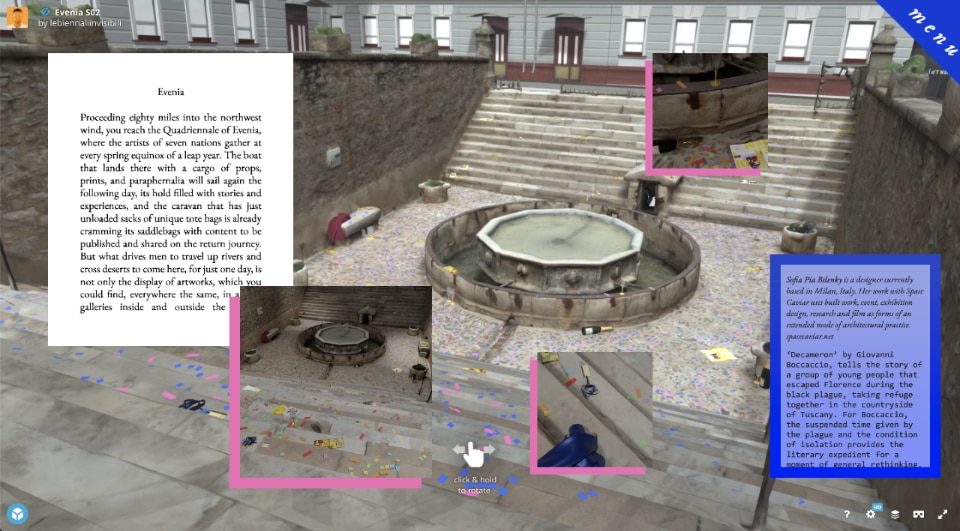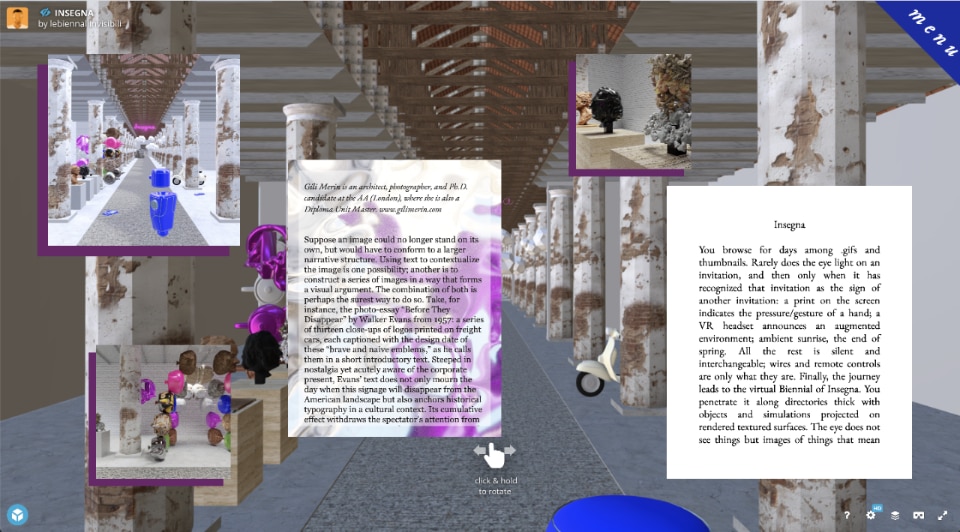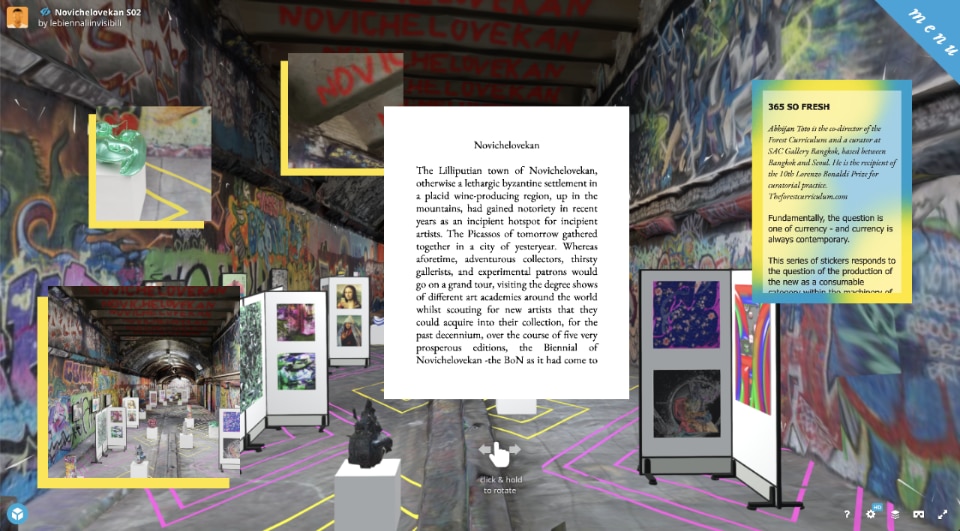"Not all biennials are the same”, states the website of Le Biennali Invisibili. This project proves it. Le Biennali Invisibili is an online project by Animali Domestici (Alicia Lazzaroni and Antonio Bernacchi), Tijn van de Wijdeven and Eduardo Cassina, curated by Alfons Hug and commissioned by the Goethe-Zentrum Baku.
At first glance, the homepage evokes the chaos and liveliness of a virtual playground: a cake, a bottle of champagne, a drill. Eleven objects floating nonstop in cyber space; each represents the gateway to one of the eleven Invisible Biennials. "Invisible" just like the Invisible Cities (1972) depicted by Italo Calvino. Le Biennali Invisibili inherits from the famous Italian writer a narrative and picturesque style leaning towards fiction and pseudo-reality, as tools to disrupt and reconstruct the curatorial approach and the concept behind each biennial. However, why “invisible”? The project explores eleven imaginary biennials all wrapped in a dreamlike, visionary atmosphere, despite presenting significant differences. The emerging scenario is closely related to the past, present and perhaps future world of art biennials.
The project consists of a series of events and virtual "rooms" that recall and critically reflect on the conventions and frameworks of artistic celebrations and events, as well as their historical and common features. In this sense, each biennial directly addresses a well-defined and distinct type of event.
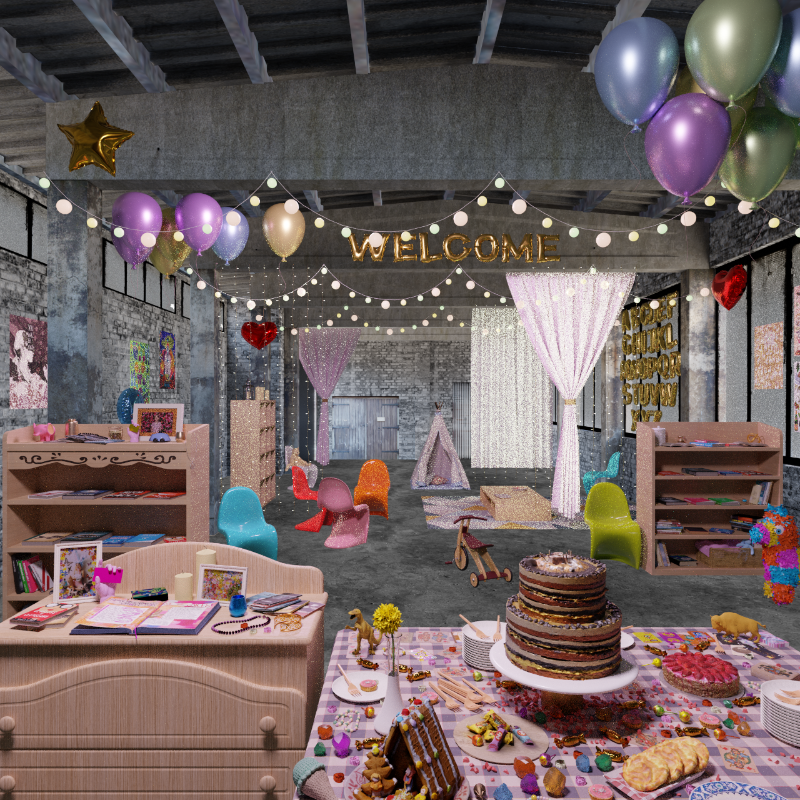
The eleven biennials are introduced by texts written by Animali Domestici, Tijn van de Wijdeven and Eduardo Cassina. Each virtual event also features a critical essay by a different guest. The names chosen are satirical and humorous: we are invited to visit “Bottavia - the biennial curated by a robot", featuring Merve Bedir in conversation with Bager Akbay; “Canonice - the conservative triennial", with the participation of artist and educator Sabina Shikhilinskaya; “Eccessa - the for-profit biennial”, with Nora Akawi and Eduardo Rega; and still “Generica - the biennial that never changes" with artist Marco Montiel-Soto, and “Puerilia - the biennial by and for children", featuring a text by Araks Sahakyan. Each event takes place in virtual rooms set up according to the theme of the relevant biennial. Wandering from one room to another, one shifts from the orderly and cold discretion of the circular white table of “Referenda - the democratic biennial", to the coloured tunnel covered with tags hosting “Novichelovekan - the biennial with new faces", to contemplate works created by "the Picassos of tomorrow".
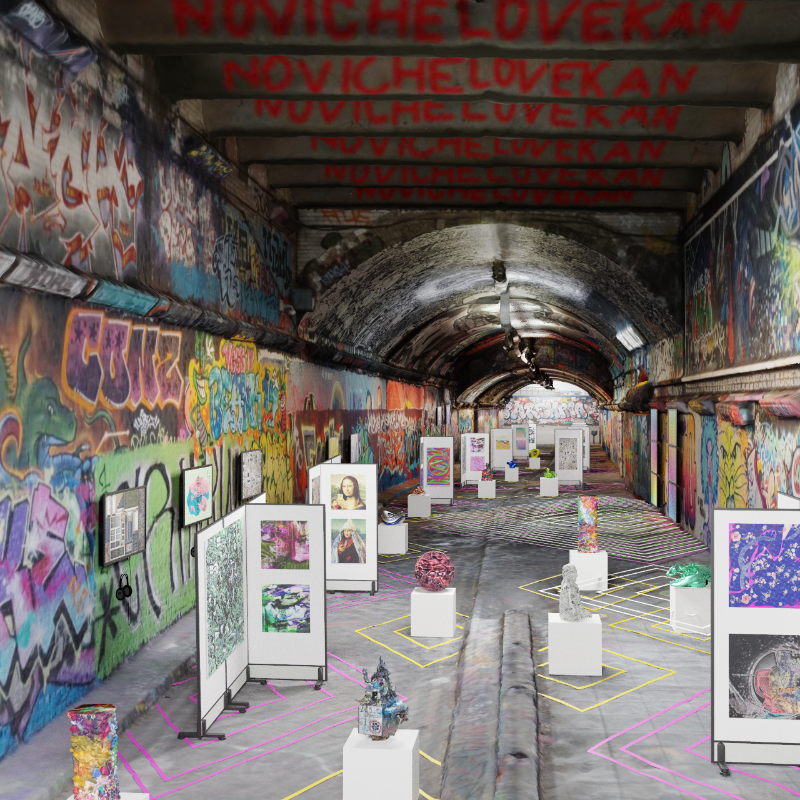
To explore these parallel realms, we asked some questions to Animali Domestici, Eduardo Cassina and Tijn van de Wijdeven, authors of the project.
What is the role of storytelling and fiction in the project and what is the relationship between Le Biennali Invisibili and Italo Calvino's Invisible Cities?
“Le Biennali Invisibili was conceived as a hybrid project, influenced by various disciplines and close to the field of critical and speculative design, as understood in the context of London over the last two decades, related to the work of Dunne & Raby. In this sense, the project uses “fiction” techniques as a method for the construction of alternative scenarios, therefore storytelling actually becomes a crucial mechanism, as its nuances precisely define the level of plausibility of the scenarios themselves.
From Calvino's seminal work, the project appropriates structures, styles, images, atmospheres, and more in an instrumental way.
Sometimes as indirect inspiration but, in various cases, also through an actual paraphrase of excerpts from the original text, which, through the substitution of terms, and cut/paste techniques, acquire new meanings. This process, however, obviously does not completely erase the original content, generating serendipitous encounters and unexpected details that enrich the narrative by adding more facets. The formal appropriation and transformation of the texts are inspired by experiments such as the celebrated Exercises in style by Raymond Queneau, not surprisingly praised and translated by Calvino, who was part of the Oulipo group founded by Queneau himself”.
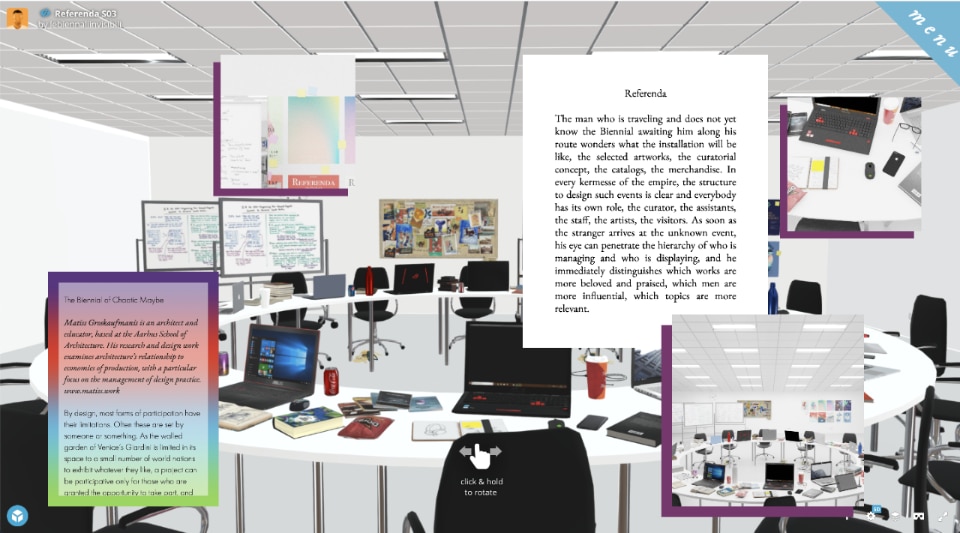
In the present context and in the altered modalities we access art, the concepts of invisibility and hypervisibility appear to be inextricably intertwined. What does the virtual offer to Le Biennali Invisibili, and what does it deprive them of?
“Virtuality influences various aspects of Le Biennali Invisibili, being an intentionally heterogeneous and ambiguous project, in which the boundaries, between real and fiction and between visible and invisible are manipulated, diverted, or blurred when needed. First of all, it gives the possibility to deliberately control the level of perception of the realities constructed by the stories; in fact, except in a few cases such as Canonice, Novichelovekan, Insegna, or Generica, the virtual space does not represent the exhibition spaces proper of the biennials, but background spaces, complementary, or indirectly connected to them, to promote the individual and independent projection of different imaginaries without giving a univocal formalization.
The virtual obviously lacks many qualities of a real exhibition (the random run-ins, the rumors of what party to attend, the printed material, the staff that populates the exhibition spaces, the rituals of access...), but for this type of exploration it could be the effect of perception "trick" between fiction and reality generated by an accurate prototype, generally identified as a "make-believe" in the field of design fiction. On the other hand, however, it also made it possible to use techniques for accumulating and manipulating pre-existing 3-D objects and spaces, found on the web through creative commons sharing platforms, substantially reducing potential limitations of resources.
On the other hand, the virtual has also helped generate a project with authors and participants spread across various time zones, cultures, and nations, totally de-localized and therefore probably even more suited to dialogue with Calvino's inspirational work”.
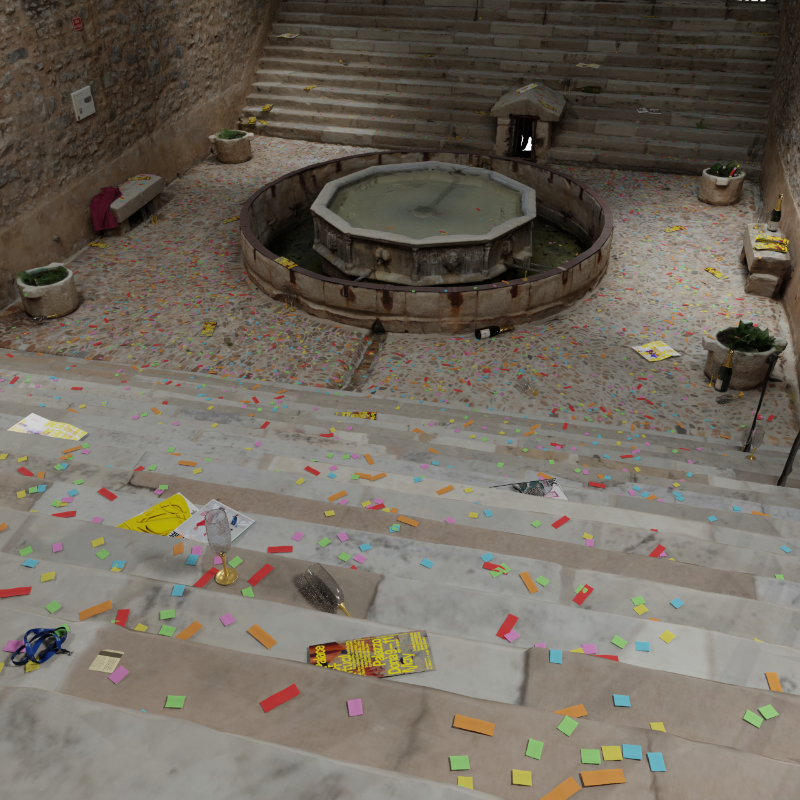
Is it correct to include among the project's intentions that of elaborating a satirical critique of the past and present of biennials, with the aim of providing food for thought and action for the future of these events?
“Absolutely, critical and speculative design makes use of satire to amplify the resonance of the message, but also to give more freedom to the critical construction. The search for the fine line of irony, without exaggerating and falling into the banal, is related to the distinction between real and fiction and more specifically, referring to the well-known “cone of possible futures”, on the border between plausible and not. Indeed, it could be said that several of these biennials have already existed partly in previous events, without having been identified as such. At the same time, the ironic side also gives the possibility of launching preposterous proposals and retrospectively evaluating their implications, without the need to maintain disciplinary relevance or to remain politically correct, paradoxically increasing the propositional value of the entire critical process”.
- Title:
- Le Biennali Invisibili
- Authors:
- Animali Domestici (Alicia Lazzaroni e Antonio Bernacchi), Tijn van de Wijdeven and Eduardo Cassina
- Curated by:
- Alfons Hug
- Commissioned by:
- Goethe-Zentrum Baku


